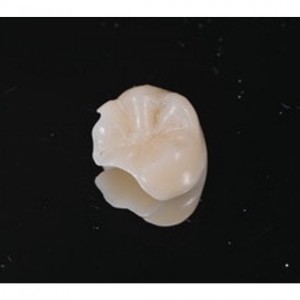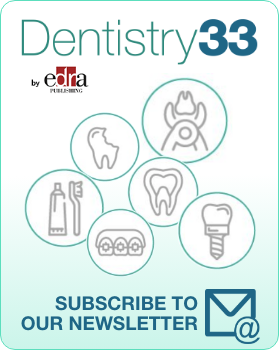
TrollFoil – takes the guesswork out of occlusal adjustment
Author: Directa Dental
Occlusal adjustment is usually a time-consuming process and a critical phase in restorative dentistry. However, most dentists do not dedicate adequate attention to this process. Research shows that around 95% of occlusal readings are incorrect1. Misreading urges the dentist to remove from different occlusal spots, which can lead to occlusal disturbance.
In crown delivery, any undetected, high occlusal point can lead to a range of consequences such as minimal cracks in the crown to TMJ pain, and sometimes failure of the implant if a crown is over an implant. In some situations, minor errors can be self-adjusted, but this is not always the case.
Despite the introduction of computerized occlusal analysis devices, articulating paper remains the most common means to check occlusion. The sensitivity and reliability of the techniques applied for occlusal analysis when using articulating paper depends on its thickness, composition, ink substrate, and plastic deformation. The oral environment (saliva, humidity) also plays an important role. Another factor that affects the readings when using articulating paper is the restorative material used. Conventionally, the material used in fixed and removable prosthodontics was either metal, composite, porcelain fused to metal, veneered zirconia, or acrylic resin. The recent introduction of full-contour zirconia, either manually polished or furnace glazed, can affect the interpretation of the reading of the articulating paper.
The Swedish occlusion foil TrollFoil (Directa) is the best ally of any dentist to meet these challenges. This exact, double-sided articulation foil can be used under a wide variety of clinical situations, including wet or dry teeth, limited opening, limited vestibular space, gaggers, on restorations in any material, including highly polished surfaces such as zirconia and e.max.
TrollFoil is mounted on a rigid plastic frame that keeps it stretched and straight, enabling the operator to hold it without the help of forceps.
Research shows that the thinner the articulating paper, the more precise marks you get.2,3 Thick articulating paper generates a less uniform and larger contact area than the occlusal area marked with thin articulating foil. This is why TrollFoil measures only 8 microns and is now also available in a new 4.5-microns version - the thinnest available foil. It proves especially useful when checking the occlusion on implants that have a very smooth and shiny surface.
For information, please contact: info@directadental.com
Sources
1. Basson E, Kerstein RB, Radke J “Ability to correctly select high force occlusal contacts from articulating paper markings”, The Journal of Advanced Dental Technologies & Techniques, February 2020 Vol. 2, No. 1
2. Schelb E, Kaiser DA, Brukl CE ”Thickness and marking characteristics of occlusal registration strips.” J Prosthet Dent. 1985 Jul;54(1):122-6
3. Zuccari AG, OshidaY, Okamura M, Paez CY, Moore BK, “Bulge ductility of several occlusal contact measuring paper-based sheets” Biomed Mater Eng. 1997;7:265-70.
 Tag
Tag
 Read more
Read more
Digital Dentistry 18 April 2024
The Columbia University College of Dental Medicine (CDM) and the Fu Foundation School of Engineering and Applied Science have received approval from the New York State Department of Education to...
Dr. Richard Eidelson, DDS, MAGD, a nationally recognized leader in cosmetic dentistry, is thrilled to announce the opening of his second dental practice, Premier Dentist Philadelphia, located in the...
DDS Lab (DDS), one of the largest full-service dental laboratories in the world, today announced the commencement of operations out of its new state-of-the-art, full-service dental laboratory based...
The global electric toothbrush market size is estimated to grow by USD 2780 million from 2023 to 2027, according to Technavio. The market is estimated to grow at a CAGR of over 8.24% during the...







d5.jpg)


